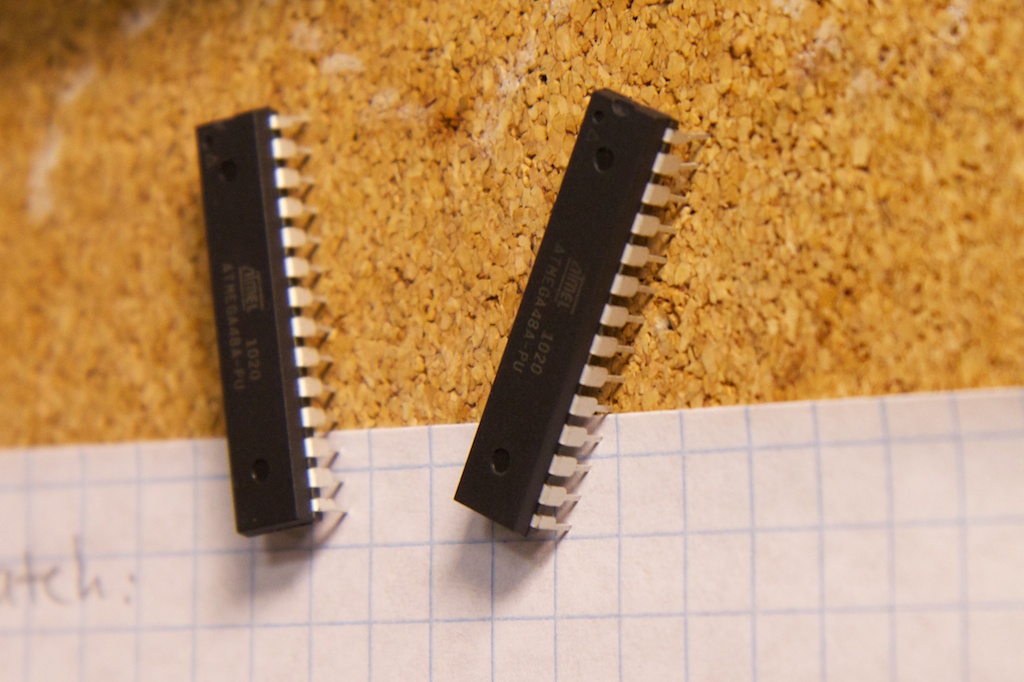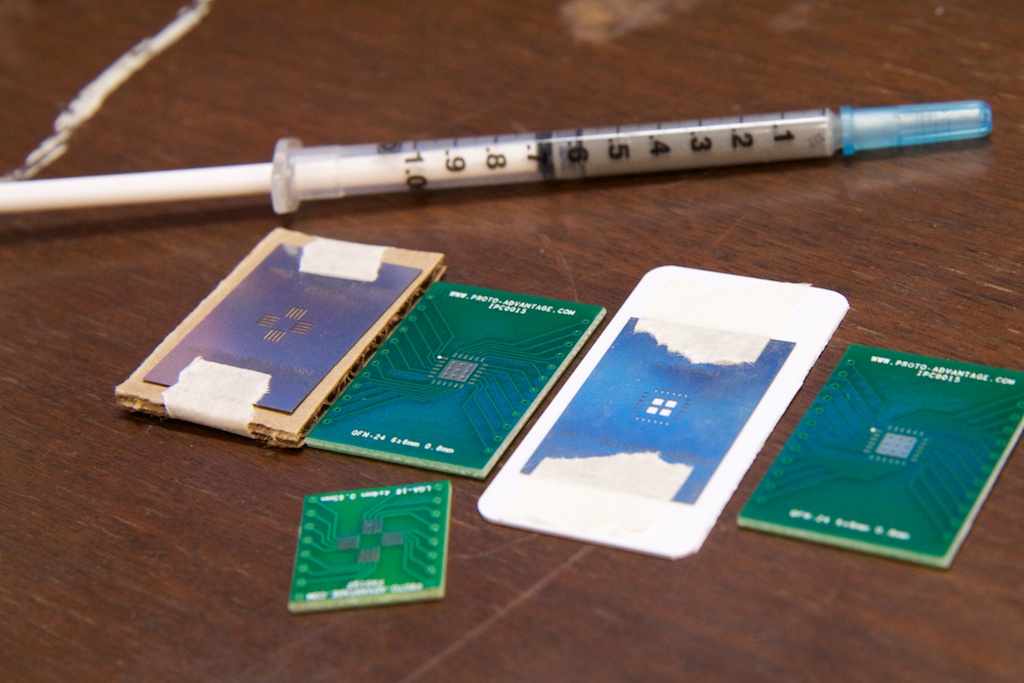So today was something of a downer.
I received my LGA-16 breakout board from proto-advantage.com yesterday, and decided to give reflow soldering another shot with my digital accelerometer, the LIS33DE.
The LIS33DE is the first 3V chip I’ve used that cannot also run at 5V. Because of this, I decided to re-do my breadboard and get myself a 3V power supply. I found an old PC power supply that can output 3.3 volts which is close enough. I’ve got some mounting posts that I’m planning on bolting to the power supply to make it a little easier to manage, but for tonight, I just used some alligator clips to bring the 3.3V to my board.
Now, along this process, I did a very stupid thing. I left my micro controller and temperature probe connected to the board. I’ve always been a fan of hot-plugging in the face of adversity, but in this case, I was a little too reckless, and not only killed another micro controller, but also the temperature probe!
Luckily, I had backups of both, and while desoldering a SOIC part is tedious, it’s by no means impossible.




